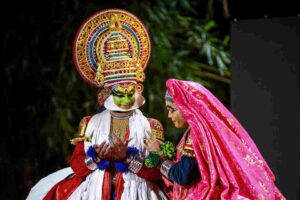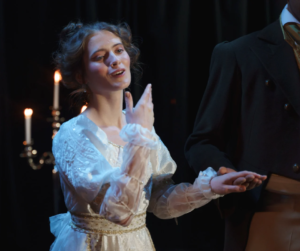Introduction to Acting Techniques

Acting is an art form that has captivated audiences for centuries. It requires skill, dedication, and a deep understanding of the craft. One of the key aspects of becoming a successful actor is mastering the various performing techniques that have been developed over time. These techniques serve as a foundation for actors to create believable and compelling characters on stage or in front of the camera. In this article, we will explore the evolution of acting techniques, with a particular focus on method acting and its enduring influence in modern acting.
Acting, the art of embodying characters and bringing stories to life, is a captivating and transformative craft that has been celebrated throughout history. Behind every remarkable performance lies a tapestry of techniques that actors employ to deliver authentic and compelling portrayals. In this blog post, we will embark on a journey into the world of performing techniques, exploring the various approaches and methods that actors utilize to master their craft.
- The Foundation: Stanislavski’s System: Stanislavski’s System, developed by renowned Russian theater practitioner Konstantin Stanislavski, forms the bedrock of modern performing techniques. The system emphasizes the actor’s ability to tap into their emotions, connect with their characters on a deep level, and create truthful and believable performances. Techniques such as emotional recall, sense memory, and the magic “if” propel actors to delve into the psyche of their characters and respond truthfully to imaginary circumstances.
- Breathing Life into Words: The Meisner Technique: The Meisner Technique, created by American actor and teacher Sanford Meisner, focuses on truthful and spontaneous reactions between actors in a given moment. Through repetitive exercises and emotional preparation, actors learn to listen, respond instinctively, and immerse themselves in the present moment. This technique cultivates authenticity, emotional depth, and a vibrant connection between actors on stage or screen.
- The Physicality of Performance: The Viewpoints Technique : The Viewpoints Technique, developed by choreographer Mary Overlie and further expanded upon by Anne Bogart and the SITI Company, emphasizes the physicality of performance. By exploring concepts such as space, time, shape, gesture, and movement, actors develop a heightened awareness of their bodies in relation to the performance space. The Viewpoints Technique encourages actors to make bold choices, collaborate with their fellow performers, and create dynamic and visually captivating stage pictures.
- Embodying Characters: The Method Acting Approach : Popularized by American theater practitioner Lee Strasberg, focuses on emotional and psychological immersion in a character. Actors utilizing this technique draw upon personal experiences, memories, and emotions to create truthful and empathetic performances. This encourages actors to deeply research their characters, develop rich backstories, and undergo physical and emotional transformations to fully inhabit their roles.
- The Power of Ensemble: The Ensemble-Based Approach: The Ensemble-Based Approach emphasizes collaboration, trust, and the collective creation of theater. This approach, employed by companies such as The Wooster Group and the Tectonic Theater Project, encourages actors to work together as a cohesive unit, collectively crafting a performance through improvisation, physicality, and shared decision-making. The Ensemble-Based Approach fosters a strong sense of ensemble dynamics, where every actor’s contribution is valued and essential to the overall success of the production.
The Evolution of Acting Techniques
Permorming techniques have evolved significantly throughout history. From the ancient Greek theatre to the present day, actors have experimented with different approaches to bring their characters to life. In the early days, performing was often highly stylized and relied heavily on vocal projection and exaggerated gestures. However, as theatre and film became more realistic, actors began to seek more naturalistic ways of portraying their characters.
Understanding Method Acting
This is a technique that was developed in the early 20th century by Russian actor and director Konstantin Stanislavski. It is an approach that encourages actors to fully immerse themselves in their characters by drawing on their own personal experiences and emotions. Method actors strive for authenticity and often use techniques such as sense memory and emotional recall to tap into their own emotions and bring them to their performances.
The Pioneers of Method Acting

Several influential figures have played a crucial role in the development and popularization of this method. One of the early pioneers was Lee Strasberg, an American actor and director who studied under Stanislavski and later became one of the leading proponents of this method in the United States. Strasberg’s teachings at the prestigious Actors Studio in New York City influenced generations of actors, including Marlon Brando and Al Pacino.
Famous Method Actors and Their Notable Performances
Method acting has produced some of the most memorable performances in the history of film and theatre. Marlon Brando’s portrayal of Stanley Kowalski in “A Streetcar Named Desire” is often cited as one of the best examples of this method. Brando’s raw and intense performance revolutionized acting and set a new standard for authenticity on screen. Another notable method actor is Robert De Niro, who is known for his immersive approach to character development. His performance as Travis Bickle in “Taxi Driver” is widely regarded as one of his finest works.
Method Acting vs Natural Acting
While method acting has its merits, it is important to note that there are other valid approaches to acting. Natural acting, for example, focuses on portraying characters in a more relaxed and spontaneous manner, without relying on personal emotional experiences. Natural actors strive to present characters in a way that feels genuine and unaffected. Both method acting and natural acting have their place in the realm of acting, and actors often choose the approach that best suits their style and the requirements of the role.
The Impact of Method Acting on Modern Acting
This method has had a profound impact on modern performing techniques. It has influenced the way actors prepare for their roles and the level of emotional depth they bring to their performances. Method acting has also influenced the way directors and casting agents evaluate actors, often valuing authenticity and emotional truth over technical skill alone. This shift in emphasis has opened doors for actors who are willing to delve deep into the psyche of their characters and bring a sense of truthfulness to their portrayals.
The Enduring Influence of Method Acting
Despite being developed over a century ago, This method continues to be widely practiced and respected in the performimg community. Many of the techniques pioneered by Stanislavski and further developed by method acting practitioners are still taught in acting schools around the world. The focus on emotional truth and authenticity has become ingrained in the fabric of modern acting, making method acting an enduring and influential technique.
Exploring Other Influential Acting Techniques

While method acting holds a prominent place in the world of acting, it is important to acknowledge other influential techniques that have shaped the craft. Meisner Technique, for example, focuses on truthful and spontaneous reactions between actors, emphasizing listening and responding in the moment. The Viewpoints technique, developed by Anne Bogart and Tina Landau, explores the physical and spatial aspects of performance. These are just a few examples of the many approaches that actors have developed to enhance their craft and create compelling performances.
Exploring Indian Actors Who Have Adopted Method Acting Techniques
Introduction
This is a technique that involves immersing oneself deeply into a character, has been an integral part of the acting landscape in India. From intense emotional portrayals to physical transformations, method actors in Indian cinema have captivated audiences with their dedication and commitment to their craft. In this blog post, we will explore the world of this method in India and delve into some remarkable films where actors embraced this transformative approach.
Title: The Method Actors of India: Unveiling their Transformative Performances
Introduction: Method acting, a technique that involves immersing oneself deeply into a character, has been an integral part of the acting landscape in India. From intense emotional portrayals to physical transformations, method actors in Indian cinema have captivated audiences with their dedication and commitment to their craft. In this blog post, we will explore the world of this method in India and delve into some remarkable films where actors embraced this transformative approach.
- The Birth of Method Acting in Indian Cinema: The seeds of method acting in India were sown in the 1950s, influenced by the works of iconic theater practitioner Konstantin Stanislavski and the emergence of the Actors Studio in the United States. Prominent theater personalities like Prithviraj Kapoor and Utpal Dutt paved the way for method acting in Indian cinema, bringing a new dimension to performances.
- Naseeruddin Shah: The Epitome of Intensity: Naseeruddin Shah, a torchbearer of method acting in India, has delivered some of the most powerful performances in Hindi cinema. His portrayal of a psychologically disturbed individual in “Aakrosh” (1980) showcased his ability to immerse himself in complex characters. Films like “Masoom” (1983) and “Sparsh” (1980) further demonstrated his exceptional talent for infusing authenticity into his roles.
- Irrfan Khan: Embracing Subtlety and Realism: Irrfan Khan, known for his nuanced performances, exemplified this method with his understated yet deeply impactful portrayals. In films like “Paan Singh Tomar” (2012) and “The Lunchbox” (2013), he effortlessly delved into the emotional depths of his characters, leaving a lasting impression on audiences worldwide.
- Ranbir Kapoor: Chameleon of Bollywood: Ranbir Kapoor, often hailed as one of the finest actors of his generation, has showcased his versatility through this method in various films. His transformation into Sanjay Dutt for “Sanju” (2018) garnered widespread acclaim, highlighting his commitment to capturing the essence of his characters. Films like “Rockstar” (2011) and “Barfi!” (2012) further showcased his ability to seamlessly blend into diverse roles.
- Vidya Balan: Channeling Strength and Resilience: Vidya Balan, a powerhouse performer, has brought method performing to the forefront with her compelling portrayals of strong female characters. In films like “Kahaani” (2012) and “The Dirty Picture” (2011), she skillfully absorbed the nuances of her characters, infusing them with depth and authenticity.
This method has undoubtedly left an indelible mark on Indian cinema, elevating performances and adding layers of realism to storytelling. From Naseeruddin Shah’s intensity to Irrfan Khan’s subtlety, and from Ranbir Kapoor’s chameleon-like transformations to Vidya Balan’s empowering portrayals, these actors have redefined the boundaries of their craft.
As audiences continue to embrace films that delve into complex human experiences, method acting in India is bound to evolve further, pushing actors to explore new depths of emotional authenticity. With their dedication, these method actors continue to inspire future generations, leaving an enduring legacy in the world of Indian cinema.
Conclusion: The Importance of Understanding Acting Techniques in Modern Acting
In conclusion, performing techniques play a vital role in the development of actors and the creation of believable characters. This method, with its emphasis on emotional truth and authenticity, has left an indelible mark on modern acting. However, it is important for actors to explore and embrace a variety of techniques to expand their range and versatility. By understanding the influential figures and techniques of the past, actors can continue to push the boundaries of their craft and captivate audiences for generations to come.
Ready to take your acting skills to the next level? Enroll in an acting class or workshop and explore the techniques that have shaped the craft. Whether you choose to delve into this method or explore other influential approaches, the knowledge and skills you gain will undoubtedly enhance your performances. Start your journey towards becoming a more versatile and compelling actor today!
Do follow Education Infinite for more Interesting Content.